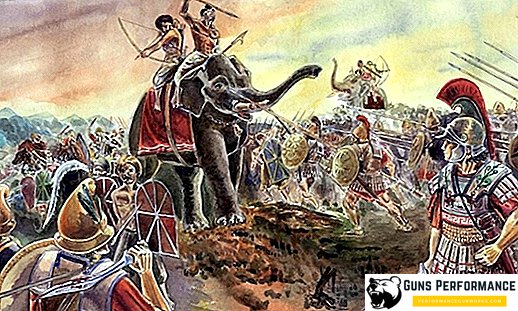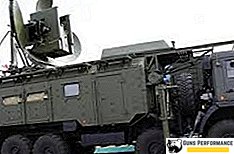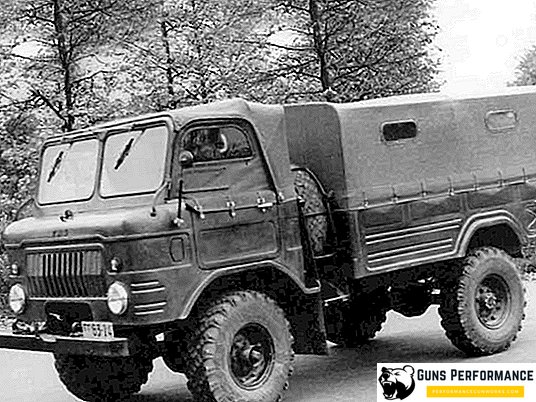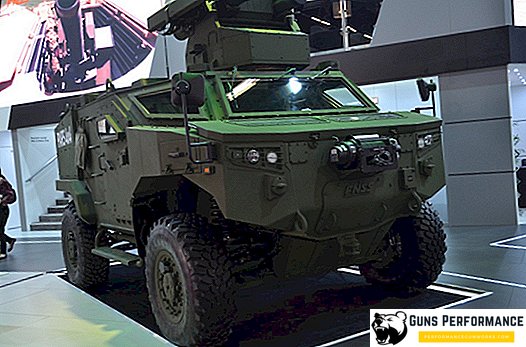Helicopters appeared over the battlefields relatively soon after the end of the Second World War. The first massive use of rotary-wing machines took place during the Korean conflict, and the Americans were pioneers in this. Initially, the helicopters performed the function of reconnaissance aircraft, fire spotters, evacuated the wounded (thanks to the use of helicopters to evacuate, the survival rate of wounded soldiers in the US army increased several times). At the dawn of their military career, helicopters did not perform shock functions.
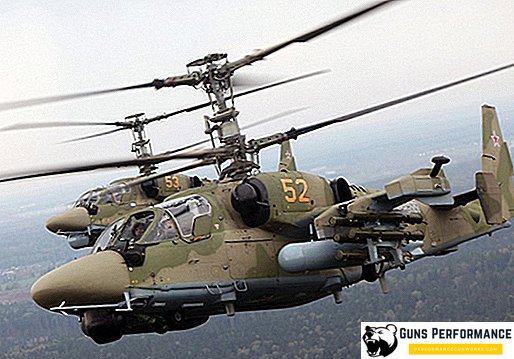
The new type of aircraft had quite a few opponents: the small speed of helicopters was noted, their lack of protection even from small arms. But the experience of using percussion variants of these machines eventually dispelled all fears, and the helicopters firmly took their place on the battlefield.
After some time, the world entered the era of the final collapse of the colonial system, and armed conflicts broke out in different parts of the world, which were characterized by active partisan actions. It turned out that helicopters, unlike combat aircraft, are great for fighting partisans.
The turning point in the history of military helicopters was October 1973, when during the Arab-Israeli conflict 18 Israeli Cobra helicopters destroyed 90 Egyptian tanks in one sortie. From that day, one of the main tasks of combat helicopters was the fight against armored vehicles.

In the Soviet Union, they did not immediately see the potential of helicopters, but then they quickly began to catch up. In 1971, the first prototype of the attack Mi-24 Soviet helicopter appeared. This legendary car is still in service with Russia and many other countries. During its long service, the crocodile managed to take part in dozens of conflicts, underwent severe tests of the Afghan war and underwent numerous improvements. If the American helicopter Bell UH "Huey" is a symbol of the Vietnam War, then the Mi-24 "crocodile" is a symbol of the war in Afghanistan.

The Mi-24 was conceived as a flying infantry fighting vehicle: in addition to powerful weapons and armor protection, it had an amphibious compartment in which it could deliver infantry to the battlefield and then support it with fire. But in reality it turned out that the landing with the Mi-24 was extremely rare, and as a rule, the helicopter was used as a shock machine. So the attempt to create a multipurpose helicopter came out not entirely successful, and in the mid-seventies of the last century, the USSR decided to create a new-generation combat helicopter. To develop a promising shock machine competition was announced between the Mil and Kamov design bureau. As a result of this competition, the best combat helicopters of Russia to date were born: the Mi-28 "Night Hunter" and the Ka-50 "Black Shark" (and the Ka-52 "Alligator").

Mi-28 "Night Hunter"
Mi-28 "Night Hunter" is essentially a deeply reworked and modernized Mi-24. The new car completely got rid of the cargo compartment and significantly changed the nose. The first Mi-28A helicopter appeared in 1987. And in 1996, his version of the improved Mi-28N, called the Night Hunter, took off.
Mi-28N - combat attack helicopter designed to fight tanks and other armored vehicles, as well as the destruction of enemy personnel. The helicopter is able to operate at any time of day and in any weather.

The main difference between the "Night Hunter" and the Mi-28A is a complex of onboard electronic equipment. Above the hub of the screw is the “Crossbow” radar, which turns the helicopter into an all-weather machine capable of performing tasks at any time of the day. All electronic equipment of the Mi-28 was combined into a single computing complex, to which all the information comes from the thermal imaging and optical sensors and the super-radar. This makes it possible for pilots to create a complete picture of the environment. In the memory of the machine there is a large bank of cartographic information, which facilitates piloting the helicopter at low altitudes with a rounding of the relief. In front of the pilots, a three-dimensional image of the area where the helicopter is located, indicating possible obstacles and targets.

The overhead radar allows the Mi-28 to "hide" behind the folds of the terrain - it is enough to "set" the antenna and get complete information about the environment. The Mi-28N is armed with a 30-mm cannon, there are also four suspension points on which you can install four packages of unguided rockets or the “Sturm” or “Attack” anti-tank missiles.
A clear example for the creators of the Mi-28N was the American Hughes AH-64 Apache. Soviet designers managed to create a helicopter with similar characteristics for much less money. Mi-28N "Night Hunter" is an analogue of the AH-64 Apache Longbow and is not inferior in its characteristics.

The idea to build a new helicopter based on the Mi-24 was not so bad. The most successful solutions used in the construction of the Mi-24, applied to the Mi-28. A part of the helicopter units is already well known to technical personnel; it is much cheaper to manufacture such a helicopter.
Technical characteristics of the Mi-28N
| Crew | 2 |
| TV3-117VMA engines | 2 |
Take-off weight, kg | |
| Normal | 10400 |
| Maximum | 11500 |
| Empty weight, kg | 7890 |
Speed km / h | |
| Maximum | 282 |
| Cruising | 260 |
Ceiling, m | |
| Static | 3450 |
| Dynamic | 5750 |
| Flight range, km | 460 |
| Ferry range, km | 1105 |
| Dimensions overall, m | 16,85*4,81 |
| Diameter of main rotor, m | 17,2 |
Armament | |
| 30mm cannon | 1 |
| Unmanaged and guided missiles | |
Video about Mi-28N
"Black Shark" and "Alligator"
The second participant in the aforementioned historical competition was the Kamov Design Bureau, and the “Kamovites” offered a helicopter of a truly revolutionary design. If the Mi-28 was made according to the classical scheme with one main and one tail rotor, then the Kamovsky Ka-50 "Black Shark" was made according to a coaxial scheme, with two main rotors. This gave the best power density (in the classical scheme about 10-15% of the engine power goes to the steering screw), but this scheme is technically much more complicated. She makes the Ka-50 one of the most maneuverable helicopters in the world.
Such helicopters are more compact in transverse projection, but have a greater height. Ka-50 was supposed to destroy the enemy with rockets from a distance of 10 kilometers, being out of reach of its air defense. At the same time, it was originally designed as a single. He was to receive target designation from a reconnaissance helicopter.

The car has an excellent reservation; composite materials were actively used in the manufacture of the helicopter. The helicopter is armed with a 30-mm cannon, has four points of suspension. They can be installed unguided and guided missile weapons. The main antitank armament of the helicopter is the Whirlwind ATGM.
The Ka-50 was put into service in 1995, but in 2009 its production was discontinued after the release of only 15 cars. Currently, instead of the Ka-50, another development of the Kamov Design Bureau, the double version of this vehicle, the Ka-52 Alligator, is being released.

Specifications helicopter Ka-50 "Black Shark"
| Crew | 1 |
| TV3-117VMA engines | 2 |
Take-off weight, kg | |
| Normal | 9800 |
| Maximum | 10800 |
| Empty weight, kg | 7692 |
Speed km / h | |
| Maximum | 300 |
| Cruising | 270 |
Ceiling, m | |
| Static | 4000 |
| Dynamic | 5500 |
| Flight range, km | 460 |
| Ferry range, km | 1160 |
| Dimensions overall, m | 16*4,93 |
| Diameter of main rotor, m | 14,5 |
Armament | |
| 30mm cannon | 1 |
| Unmanaged and guided missiles | |
One of the main reasons for the cessation of production of the Ka-50 was just the “singleness” of this helicopter. "To pilot a helicopter at low altitudes is very difficult, even more difficult to fire at the enemy. The coaxial helicopter is rather difficult to pilot and requires serious skill from the pilot Therefore, the Ka-52 "Alligator" replaced the Ka-50 "Black Shark".

Ka-52 - double modification of the Ka-50. The helicopter differs from its predecessor in the modified nose and the complex of new electronic equipment. The Ka-52 was originally conceived as a commander machine that coordinates the actions of the Ka-50 helicopter group.
The Ka-52 is equipped with the Argument-2000 multifunctional navigation system, which makes the helicopter all-weather and able to fly at any time of the day. It consists of the search and sighting system GOES-451 and the surveillance system.
Armament is similar to the Ka-50.

Ansat
Another interesting machine that is already being supplied to the Armed Forces and civilian customers in various configurations is the Ansat helicopter, developed and manufactured at the Kazan Helicopter Plant. "Ansat" is built according to the classic single-screw scheme, it has two gas turbine engines. It can lift up to 1,300 kilograms of cargo or 9 passengers.

The first flight "Ansat" made in 1999. The machine is universal: it can carry cargo, passengers, be used as a medical and search and rescue helicopter. Kazan designers have created a modification "Ansat-U" - a training helicopter for training cadets of military schools.
Swift Mi
Information appeared in the press about the development of a new high-speed helicopter at the Mil Design Bureau. In 2018, the draft of the new machine should be completed. In 2014-2015, it was planned to allocate 4 billion rubles for this project from the state budget.
Initially, the Kamov Design Bureau participated in this program, but the Mil Design Bureau was found to be more successful. The new helicopter should have a range of up to 1.5 thousand kilometers and reach speeds of up to 450 km / h. A helicopter is created for the needs of civil aviation.
You can add that the creation of high-speed helicopter involved in other countries. In particular, a similar machine is being developed at Sikorsky Aircraft.
The old horse does not spoil the furrow
To date, a large number of old, time-tested Mi-24s remain in Russia. Back in 1999, a program was developed to upgrade these helicopters. The updated car received the designation Mi-35. It is produced for the needs of the Ministry of Defense of Russia and exported abroad.
In the new helicopter installed a new thermal imaging system and night vision devices. In addition, the Mi-35 is equipped with a satellite navigation system that allows you to accurately determine the coordinates of the machine.
By the beginning of 2014, 24 Mi-35s were manufactured for the Russian Ministry of Defense, and another 50 units were planned to be transferred by the Russian military by 2018.
Mi-171A2 and Mi-38
Another interesting machine, which is at the stage of state tests, is the Mi-171A2 helicopter. This is nothing more than a deep modernization of the famous MI-8. In fact, this car is a continuation of the glorious traditions of the Mi-8/17 helicopters, made at the modern technological level, using the most modern technologies and materials. On the new helicopter will be installed modern control system, the power plant, the interior will be redone. In 2014, the helicopter was certified, in 2016, its mass production began.

Another replica of the Mi-8/17 is the Mi-38 cargo-passenger helicopter. Many modifications have been made to this car. Modern avionics, all-glass cabin, extensive use of composite materials. The rotors of the helicopter are made entirely of composite materials and do not require replacement during the entire service life of the vehicle.

Created several modifications of the Mi-38, capable of performing various functions: to carry passengers and cargo, to perform search and rescue work. In 2014, test flights were conducted, and in the beginning of 2015, Mi-38 certification took place.


